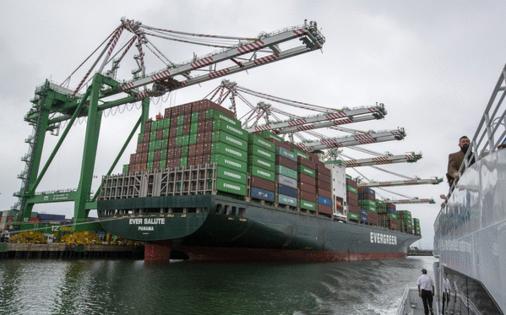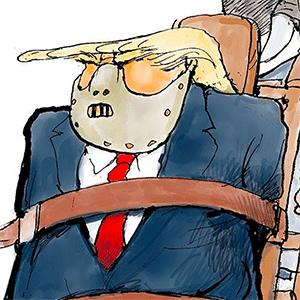Trump vs. Harris: How tariff policy impacts your portfolio
Published in Business News
Tariffs have been a political economic talking point throughout the 2024 presidential election.
Although former president Donald Trump and vice president Kamala Harris offer different campaign proposals, the Republican and Democratic parties have both leveraged tariffs in recent years in an attempt to safeguard American manufacturers against competition from China and other countries.
While tariffs are meant to protect domestic companies, research and studies show the fiscal policy often ends up raising prices for consumers. The impact — and potential impact — of tariffs on the stock market is less clear.
So, what are tariffs exactly, and how do they impact your daily life and investments?
Here’s everything you need to know about where Trump and Harris stand on tariffs, and how their proposals may impact your investments.
How do tariffs work?
A tariff is a tax imposed on imported goods. Tariffs are used to stabilize prices or reduce imports in an effort to support businesses at home that compete with companies abroad.
“Some sectors gain and others lose from any change in tariffs, up or down,” says Alan Deardorff, professor of public policy and economics at the University of Michigan.
Tariffs are often lower for countries with U.S. trade agreements, like Canada, and higher for countries with strained U.S. relations, like China.
In general, most economists don’t think tariffs are a great way for the government to make money or boost the economy. They often argue that tariffs can be inefficient and lead to higher prices for consumers.
“The higher price of the imported goods leads to a similar rise in the price of domestically produced comparable goods,” says Deardorff. “So U.S. buyers pay more for the good, whether it’s imported or not.”
Case in point: After a 2018 tariff on washers, the price of washers — both imported and domestic — rose by about 12%, according to a study by University of Chicago researchers. Dryers, which weren’t under the tariff, went up by about the same amount. Overall, the tariff increased costs to consumers by an estimated $1.5 billion annually.
Businesses have two choices when tariffs are imposed: stop importing the product or raise the price. If they can’t find a cheaper alternative in the U.S., companies often pass the cost of the tariff on to consumers.
So while tariffs might help some domestic businesses, they can hurt others and raise prices on everyday people.
Trump’s stance on tariffs
Trump has been a vocal supporter of tariffs since the 1980s, and the protectionism policy played prominently in his first term. Trump has also discussed tariffs at length during his current run for the White House.
Namely, Trump is calling for a 10% to 20% across-the-board tariff on all foreign goods and a 60% or higher tariff on imports from China specifically.
In September, Trump also suggested slapping a 100% tariff on imported goods from Mexico, a move that could derail the trade agreement his own administration worked out with Mexico and Canada.
Several prominent economists have pushed back on Trump’s proposed tariffs. In October, U.S. Treasury Secretary Janet Yellen warned about the negative impact of high tariffs on the economy in remarks delivered to the Council on Foreign Relations.
“Sweeping, untargeted tariffs would raise prices for American families and make our businesses less competitive,” Yellen said.
Throughout his presidency, Trump imposed multiple rounds of tariffs, most famously during his trade war on Chinese goods. He also applied a 25% tariff on imported steel and a 10% tariff on aluminum, hitting imports from Europe, Canada, Mexico and other areas. Canadian lumber was taxed too, driving up prices at home, along with other goods such as solar panels and washing machines.
Trump’s adamant support of tariffs is somewhat unusual for a Republican politician, says Deardorff. The professor points out that since at least World War II, Republicans tend to favor freer trade due to their support for business while Democrats tend to favor protectionism policies due to their support of labor.
“Trump somehow managed to change the view of many Republicans (on tariffs), though I’ve never understood why,” says Deardorff.
Deardorff points out that presidents from both parties have seen the benefits of reducing tariffs through negotiations that get other countries to reduce their tariffs as well, such as the bipartisan passage of the North American Free Trade Agreement (NAFTA) in 1993.
“The only thing that seems to have changed, really, is the election of Donald Trump,” says Deardorff.
Between 2017 and 2020, the average tariff on imports doubled from 1.4% to 2.8%, while goods that were specifically tariffed saw their rates jump from 4.7% to 8.9%, according to The Tax Foundation.
The stock market reached its height during Trump’s presidency in January 2018, right as Trump announced tariffs on Chinese products.
Harris’ stance on tariffs
Democrats support tariffs, too. President Joe Biden’s administration largely maintained the Trump-era tariffs on various Chinese imports, including solar cells, semiconductors and advanced batteries.
In May, the Biden administration increased the tariff rate on electric vehicles imported from China from 25% to 100%. Biden also kept or increased tariff rates on Chinese steel and aluminum products, and medical goods.
Biden backed away from some tariffs impacting U.S. allies, including his 2021 decision to suspend tariffs on the European Union for five years.
But as Deardorff points out, Biden replaced levies on steel and aluminum with what’s known as tariff-rate-quotas that “likely still provide protection but without the tariff revenue for the U.S. government.”
Harris hasn’t outlined any specific changes she’d make to the current tariff structure if elected, though she’s widely expected to follow similar policies. Harris has criticized Trump’s tariff plans, calling them a “sales tax on the American people” in an interview with MSNBC, and claiming they would increase household costs by $4,000 a year.
Overall, the S&P 500 and Dow Jones indexes have been higher during Biden’s presidency than their peak under Trump. That’s typical for these indexes — they tend to rise over time and rose during Trump’s presidency too, just not as high.
The S&P 500 index appeared unaffected following Biden’s May 14, 2024, decision to extend many of Trump’s tariffs and implement new ones. From May 14 until Oct. 21, the S&P 500 index gained 11.6%.
How much could proposed tariffs raise prices?
The impact of tariffs on American families varies depending on which economist or analyst you ask.
According to an August study by the Peterson School for International Economics, Trump’s largest tariff proposals would cost the average American about $2,600 a year.
Meanwhile, an August analysis by the Tax Policy Center estimates that a worldwide 10% tariff and a 60% tariff on Chinese goods would cost Americans an average of $1,800 in 2025.
How tariffs might impact your investments
A tariff on all imported goods could cause U.S. stocks to drop by about 10% and bond yields to decrease, according to one analysis released by UBS Wealth Management in May.
Barclays’ analysts estimate a 4.7% decline is possible in the S&P 500 next year if Trump’s proposed tariffs — 10% across-the-board and 60% on goods from China — go into effect.
The impact of tariffs on the U.S. stock market wouldn’t be uniform though: Certain industries and sectors would be impacted more than others. Retailers, auto manufacturers, tech hardware and semiconductors would feel the brunt of a tariff war, according to the UBS analysis. Barclays points to tech, health care, industrial, material and consumer discretionary markets as likely impacts.
Researchers also pointed out that stock markets in other countries, particularly those tied to trade and economic cycles, would likely be hardest hit.
But in reality, it’s hard to pin down the exact impact of higher tariffs on stocks and other investments, in part, because tariffs don’t happen in a vacuum. Other economic factors — including interest rates, inflation, general volatility and the strength of the U.S. dollar — also influence the market, something the UBS report acknowledges.
“Changes in consumer and corporate behavior, as well as currency fluctuations due to the tariffs will be important drivers of the ultimate size of the downside in U.S. stocks,” the report noted.
Overall, higher tariffs would spell trouble for international stocks that rely on exporting to the U.S., especially Chinese stocks.
Americans’ investments in industries such as manufacturing, technology and agriculture — sectors that depend heavily on global trade — could also feel the pressure.
“It depends on what products the tariffs are put on,” says Deardorff. “And also whether new U.S. tariffs prompt retaliation by other countries.”
However, the jury is still out on how much tariffs actually move the U.S. stock market for average investors. A July 2024 analysis by Charles Schwab found little impact on stocks after tariffs rolled out in 2018 and 2019 during Trump’s first term.
Interestingly, companies that operate more domestically didn’t outperform those with significant international sales, the analysis found.
In fact, an index of S&P 500 companies with higher international sales during 2018 and 2019 performed better than an index of companies with fewer sales abroad. This suggests that avoiding stocks with greater exposure to trade wars probably isn’t a winning investment strategy.
Bottom line
Tariffs are a complex economic tool that can affect everything from household costs to international stocks. While they aim to protect domestic businesses, tariffs’ effectiveness can be uneven and unpredictable.
For the average investor, radically altering your portfolio in response to tariffs doesn’t make a lot of sense. Instead of reacting to geopolitical tensions and threats, taking a long-term approach that aligns with your financial goals and risk tolerance offers a more reliable way to grow wealth.
©2024 Bankrate.com. Distributed by Tribune Content Agency, LLC.












Comments